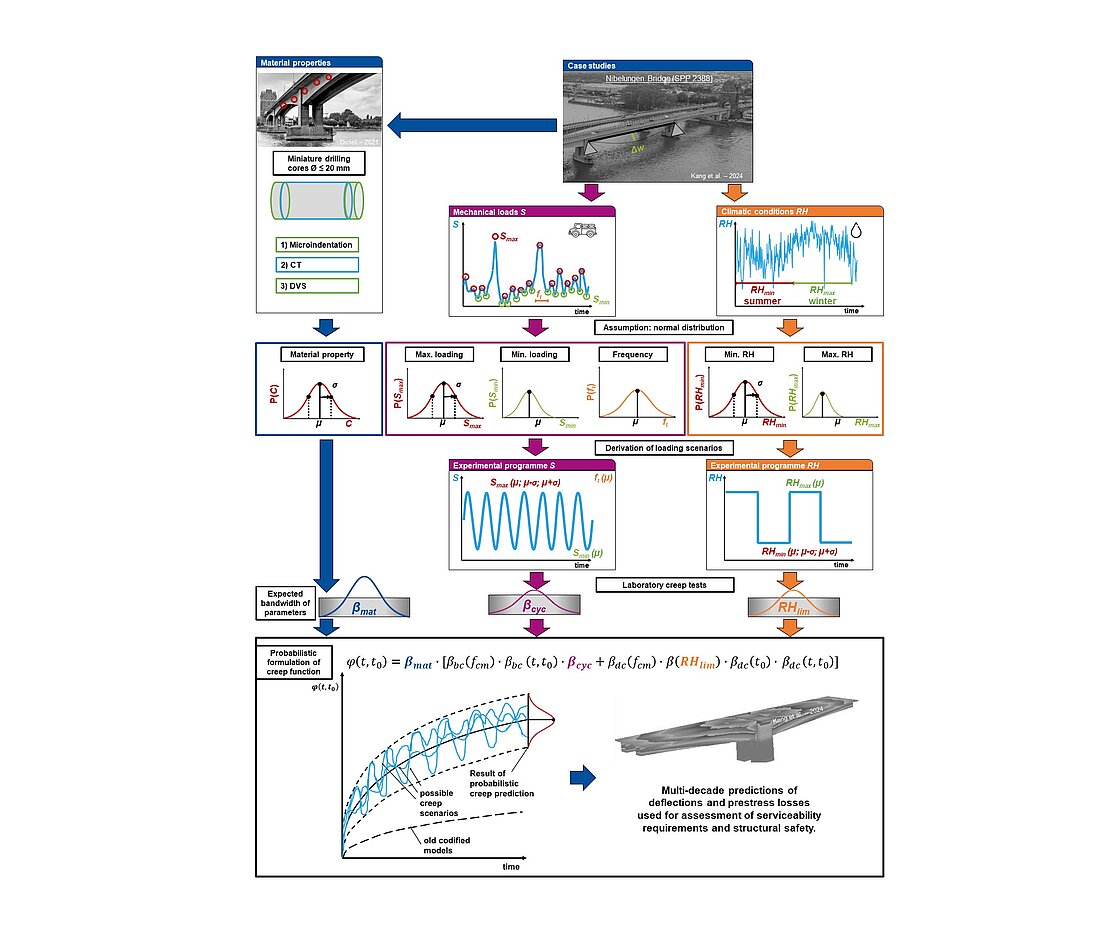Data-informed probabilistic prediction of concrete creep considering the hygral and mechanical history of existing structures (CreepStatus)
The time-dependent deformation behaviour of concrete, particularly compressive creep, has a significant influence on the serviceability and durability of creep-sensitive structures such as prestressed box girder bridges. An accurate prediction of these creep deformations is therefore essential for reliable assessment of serviceability. A loss of prestressing force due to unaccounted creep effects can also have a significant negative impact on shear and bending resistance at the ultimate limit state.
The creep models – as given in Eurocode 2 or Model Code 2020 – are based on generalized assumptions regarding the concrete properties, environmental conditions and loading history. This approach neglects both the dispersion of material parameters and the complexity of the loading and environmental history of existing structures.
This leads to considerable uncertainty in assessing the remaining service life, particularly in the case of older prestressed box girder bridges, which are exposed to significantly higher mechanical loads and environmental changes during their service life than originally assumed. A detailed understanding of time-dependent material properties and the resulting prestressing losses is therefore essential for accurately assessing the structural performance.
The objective of the project is the development of a data-based and probabilistic model for a more accurate prediction of the creep behaviour of existing concrete structures. By incorporating the exact concrete composition, historical climate data and loading history, an understanding of the actual deformation behaviour over the entire service life is obtained. This forms the basis for an improved assessment of the remaining service life and structural safety of existing prestressed concrete bridges.
The work programme is divided into four work packages (Figure 1). In work package 1, miniature drilling cores are extracted from the Nibelungen Bridge and analysed in terms of their composition and microstructure. Microindentation, CT (computed tomography) measurement and DVS (dynamic vapour sorption) analysis are used for this purpose. The results from the investigations on the miniature drilling cores are used to produce laboratory reference samples and to determine a scaling factor . These serve as test specimens in the following work packages in order to minimise interference with the existing structure by extracting miniature drilling cores. The objective of work package 2 is to quantify the influence of cyclic mechanical loads and taking historical loading scenarios into account, to derive a scaling factor including its statistical distribution. For this purpose, tests are carried out with varying upper and lower stress levels as well as different frequencies. In work package 3, the influence of cyclic hygric loading is to be determined. The objective in this case is also to derive a scaling factor , with consideration given to historical environmental conditions and their statistical distribution. In work package 4, the results generated previously are combined in a model. This model then incorporates statistically evaluated variations in material properties, mechanical loading and ambient humidity.





